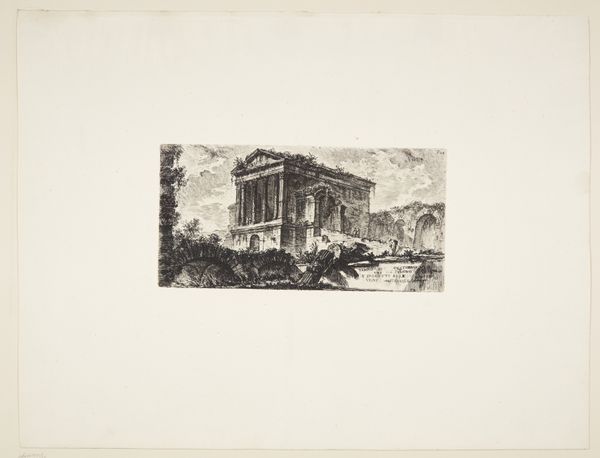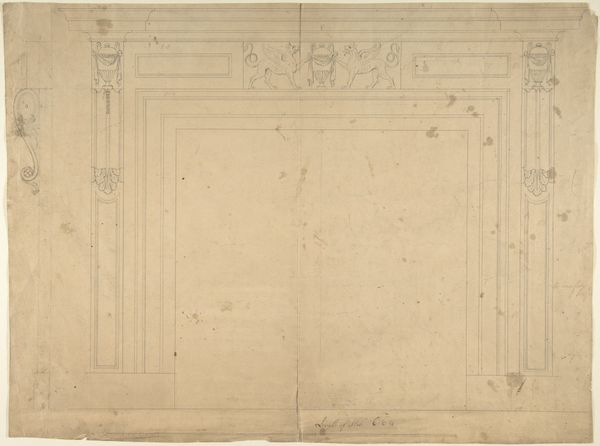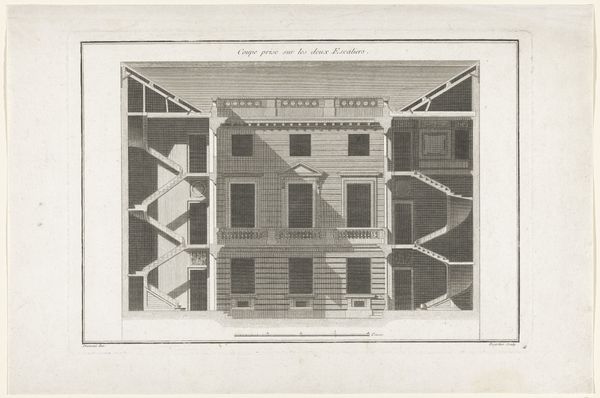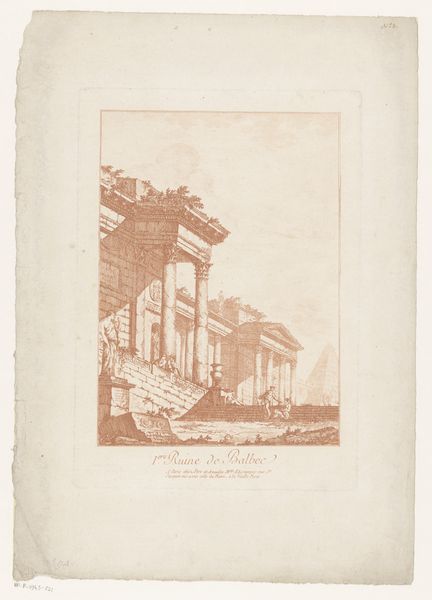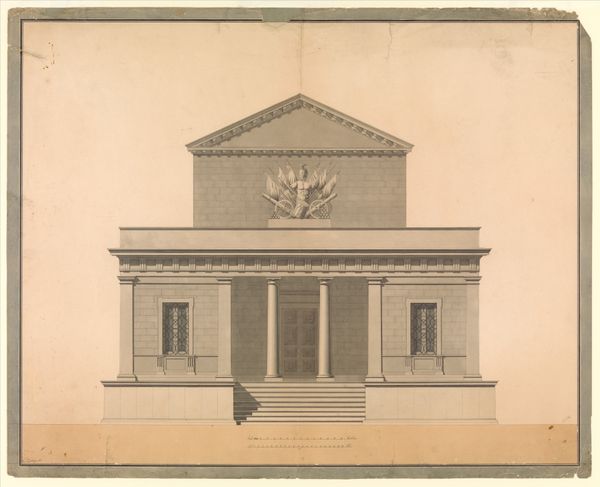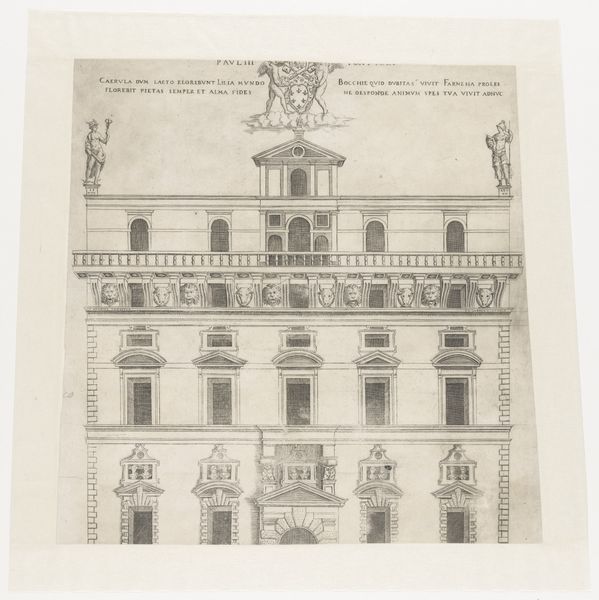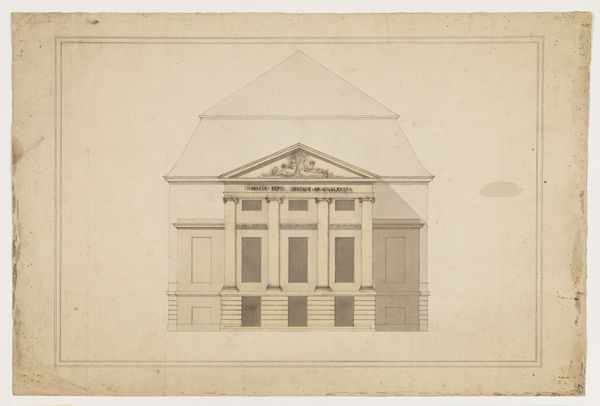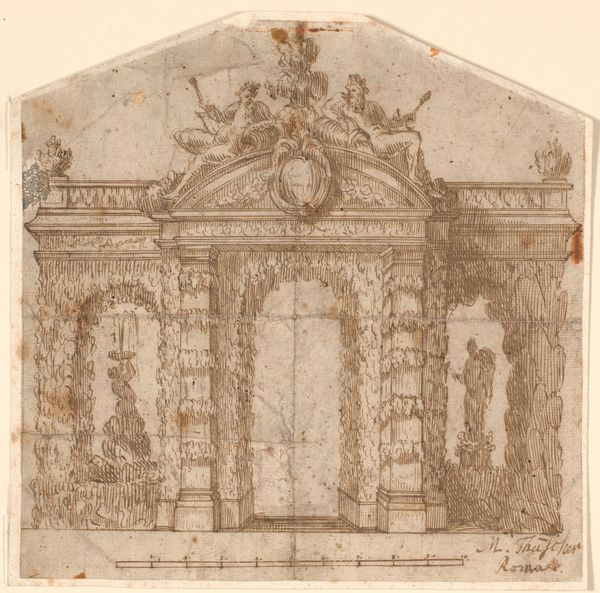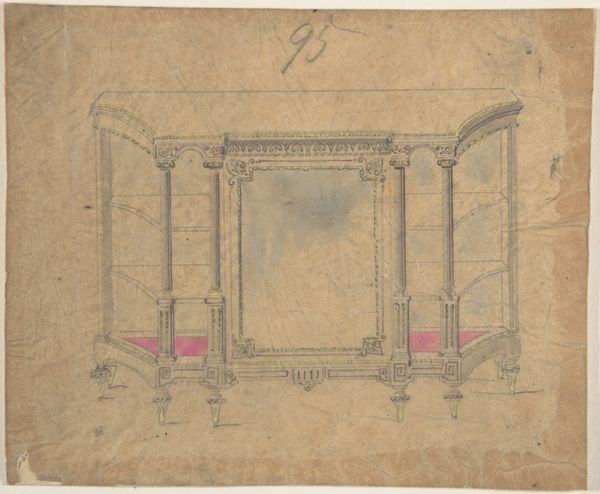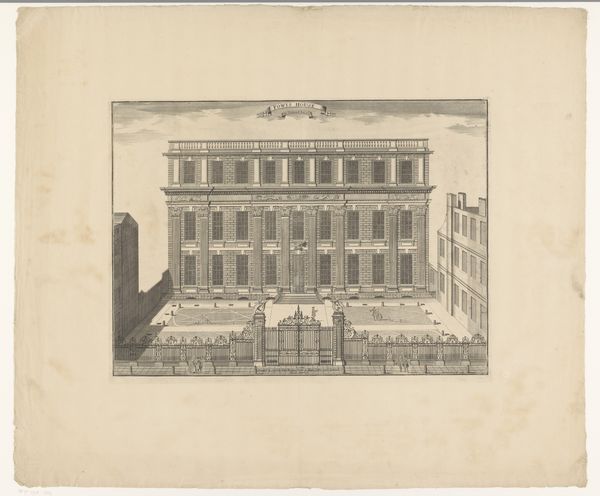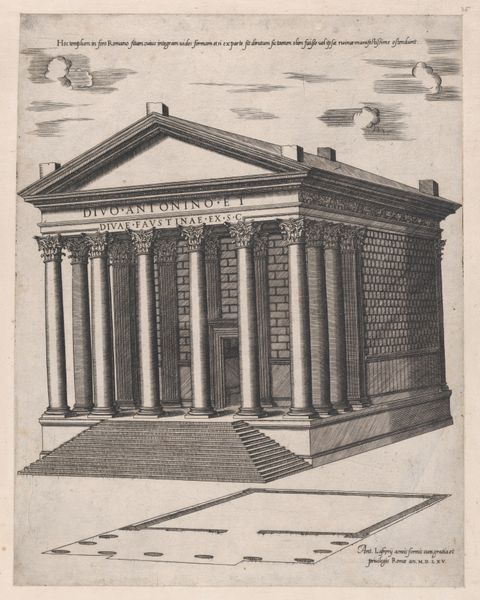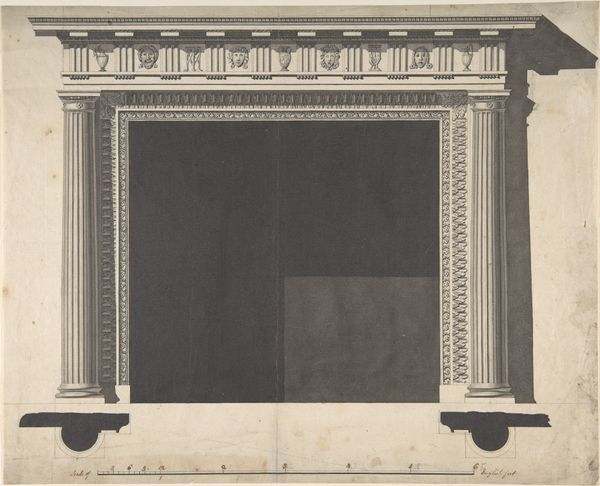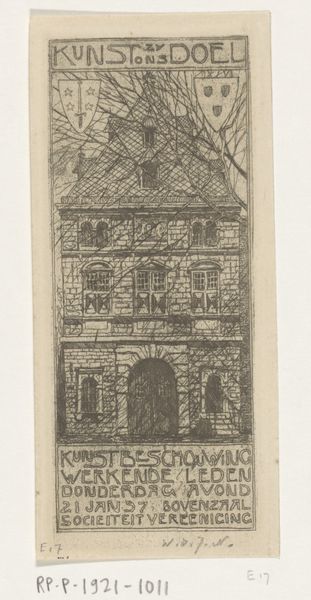
print, engraving, architecture
neoclacissism
line
cityscape
engraving
architecture
Dimensions: 208 mm (height) x 275 mm (width) (plademaal)
Editor: Here we have Frederik Ludvig Bradt’s "Det kgl. Teaters Facade," created between 1760 and 1777. It’s an engraving – a print – depicting a neoclassical building. There's something quite ethereal about the piece, maybe from the aged look of the print. What jumps out at you? Curator: As a materialist, I'm particularly interested in how Bradt's choice of engraving highlights the labor and the means of production involved. Think about the engraver, meticulously working on the plate to create this image. The lines aren't just representations; they are evidence of physical labor. Editor: That's interesting. I hadn't thought about it that way. I was focusing more on the architectural subject. Curator: The architectural subject is also important, but how does the medium affect our understanding? Is this a celebration of architecture or a commentary on its construction and the societal values it embodies? Consider the paper itself: what kind was it? Where did it come from? What social class would have owned such a print? Editor: So, you're suggesting that the print's value lies not just in the image, but in the story of its making and its circulation. That challenges my assumption that art is purely about aesthetics or representation. Curator: Exactly! The “how” and “why” it was made are just as critical. Looking closely, one notices the textures from the engraving process itself – unintentional or otherwise. Does this introduce another level of analysis beyond mere visual representation? How does its circulation influence and construct consumer demand? Editor: It completely shifts my perspective. I always focused on what the artist was trying to say with the image. I now understand the material aspect also conveys messages and can influence the art's accessibility. Thanks for showing me that. Curator: Of course. Recognizing the materiality urges us to acknowledge artistic creation and reception as material realities, not abstract ideals.
Comments
No comments
Be the first to comment and join the conversation on the ultimate creative platform.
